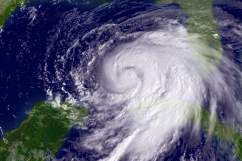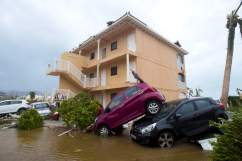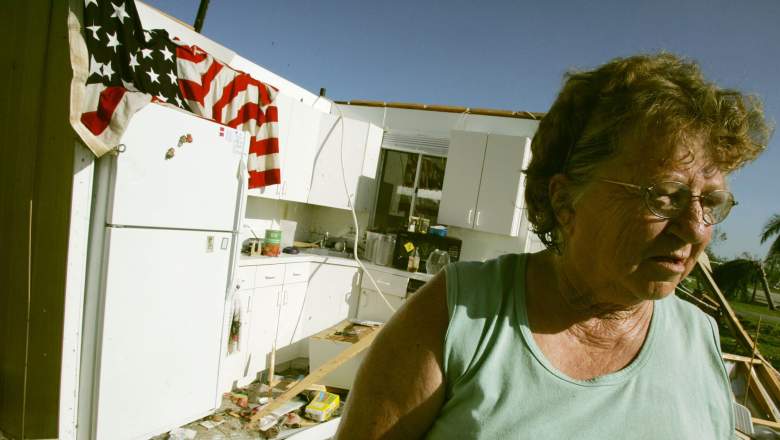
Getty A woman surveys the damage done by Hurricane Charley on August 15, 2004 in Punta Gorda.
Since Hurricane Irma is moving along Florida’s west coast, the storm has been compared to Hurricane Charley. In August 2004, Charley slammed into the southwest coast, making landfall near Port Charlotte in Charlotte County. It then crossed over Central Florida.
Charley was directly responsible for 15 deaths and indirectly responsible for another 20 deaths. It caused an estimated $16.3 billion in damage in the U.S. and the Caribbean. However, Tampa Bay avoided a direct hit from the hurricane. In fact, Tampa hasn’t faced a direct hit from a hurricane since the October 1921 hurricane.
With Hurricane Irma moving up Florida’s west coast, here’s a look back at Charley.
1. Charley Was the Strongest Hurricane to Hit the U.S. Since Hurricane Andrew

Created using WikiProject Tropical cyclones/Tracks. The background image is from NASA. Tracking data from the National Hurricane CenterThe track for Hurricane Charley in 2004.
Since Hurricane Irma spent much of its time in the Caribbean as a Category 5 hurricane, there was fear that it could be the first Category 5 to hit Florida since Hurricane Andrew in 1992. But Charley is a more recent example of a strong storm making a direct hit to Florida.
As WESH noted in 2014, Charley was the strongest hurricane to hit the U.S. since Andrew. Charley made landfall near Port Charlotte on August 13, first striking St. Vincent Island, Cayo Costa and Punta Gorda. At the time of landfall, its maximum sustained winds were between 145 mph and 150 mph.
By the time the storm reached Orlando, winds were at 105 mph. An elementary school in Winter Park completely lost its roof, while planes at the Orlando Executive Airport were damaged or even destroyed.
2. Charley Took a Sudden Turn That Saved Tampa, But Left Punta Gorda Leveled
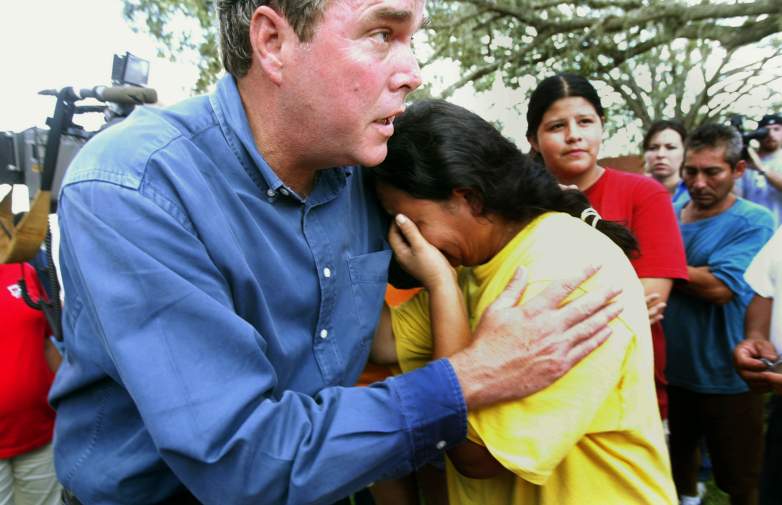
Then-Governor Jeb Bush comforts a resident in Arcadia.
Less than 12 hours before making landfall, Charley took a sudden turn that saved Tampa from a direct hit. However, that meant Punta Gorda and Port Charlette nearly destroyed.
“It’s heartbreaking. It’s sickening,” WESH 2’s Dave McDaniel said in 2014. “Charley played no favorites. Charley was not a friend as he rolled through Punta Gorda.”
In a Tampa Bay Times report at the time, then-Governor Jeb Bush described Punta Gorda as “ground zero,” adding that “Our worst fears came true.” Over 1.1 million people were without power.
The storm’s last-minute path change also made an impact on Eastern Polk County, catching residents surprised. “The power was out for days and people didn’t know what to do,” resident Tom Walkup told WFLA on September 5. “They didn’t like the idea of eating food out of cans.”
“I couldn’t go home to Orlando International for like, three days. Our home we built in 1975, had about $90,000 in damage and we put another 50 into repairing it,” resident Ron Jakeway told WFLA. As a result, residents of Polk County made sure they were prepared and evacuation orders were posted days before Irma reached Florida.
3. The Hurricane Caused $6.755 Billion in Damage in Florida Alone
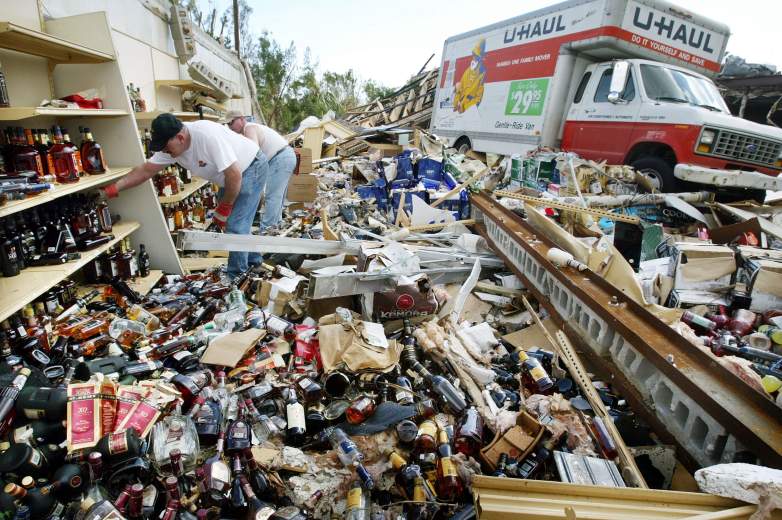
GettyA liquor store in Port Charlotte ripped open.
According to the National Hurricane Center’s report on Charley, the storm was directly responsible for 10 deaths in the U.S., including the deaths of a husband and wife in a Port Charlotte mobile home and two men who were struck by flying debris. The storm also caused four deaths in Cuba and one in Jamaica.
The Property Claims Service reported that Charley caused $6.755 billion in uninsured damages in Florida alone. It also caused an estimated $25 million in damage to North Carolina and $20 million in South Carolina.
“Using a two to one ratio of total damages to these two insured damage amounts, a rough preliminary estimate of the total damage is 14 billion dollars” in the U.S., the NHC noted.
At the time, this made Charley the second costliest hurricane in U.S. history. Today, it is considered the ninth costliest, following more recent devastating storms like Katrina, Ike and last month’s Hurricane Harvey.
4. Charley Also Had a Major Impact on the Citrus Crop
Florida also took an economic hit from Charley. As the second-largest producer of oranges in the world, officials instantly recognized that farmers would lose millions of dollars.
“We think the damage is going to be in the hundreds of millions,” Charles H. Bronson, the Florida commissioner of agriculture, told the New York Times after the storm hit. “It could be a billion or more — we just don’t know yet.”
Dan Richey, then-CEO of River Fruit Packing, told the Times that Charley riped right through a 25 to 50-mile stretch of Florida’s citrus belt.
According to a 2005 study at UFL, “the organge crop was redusced by 31 percent” compared to the 2003-04 season thanks to Charley. The grapefruit crop dropped by 68 percent.
At the time, citrus was a $9 billion industry for Florida, NBC News reported. Recently though, the industry’s impact on Florida’s economy has decreased. The Herald Tribune reported in May 2017 that the industry’s contribution to the economy has dropped 31 percent over the past four citrus seasons. Still, it contributes $8.6 billion, which is no small change.
5. It Was 1 of 3 Deadly Hurricanes to Hit Florida During the 2004 Hurricane Season
Charley was just the start of a devastating 2004 hurricane season. As WESH notes, Charley was followed by Hurricane Frances three weeks later, causing $9.8 billion in total damage. Hurricane Jeanne came later in September.
Frances killed five people in Florida and dumped 15 inches of rain in Central Florida. The Kennedy Space Center in Volusia County was hit hard, with the vehicle assembly building torn open. Disney World was even closed for the first time since 1999’s Hurricane Floyd.
Disney closed days later when Jeanne hit. That storm, which killed over 3,000 people in Haiti as a tropical storm, led to $7 billion in total damage.
Charley, Frances and Jeanne are now on the list of retired Atlantic hurricane names. Other names that will never be used again include Katrina, Iris, Juan, Ivan, Wilma, Gustav, Sandy, Ike, Matthew and Otto.
